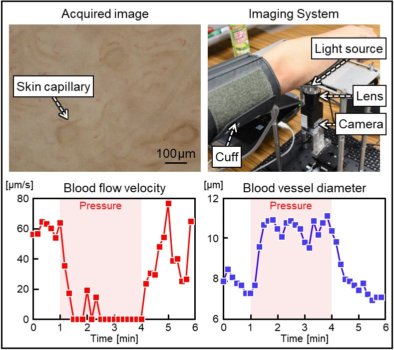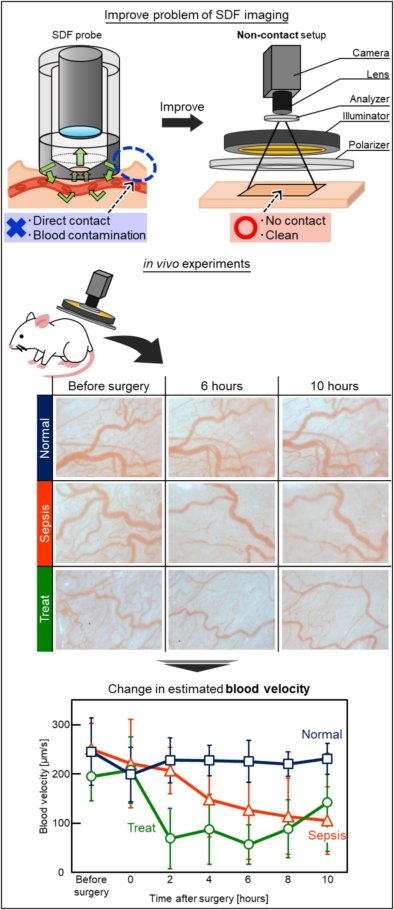Imaging and analysis of microcirculation
(微小循環のイメージングと解析)
Microcirculation is the small blood vessels whose diameter is less than 100 μm and is found in all parts of the body. Its functions are gas and nutrient exchange between the blood and the tissues. Sufficient exchange of substances in microcirculation is essential for maintaining life. Since, imaging of microcirculation enables us to investigate its alterations, it is useful for perceiving the state of health. Furthermore, to evaluate quantitatively the microcirculation by analyzing a moving image, we are aiming to monitor the state of health, to reveal mechanisms of a disease and also to explore effectiveness of the treatment.Image-based analysis of hemodynamics in skin capillaries
|
Makoto Adachi, Yuito Tsukamoto |
| Skin capillaries are blood vessels with a diameter of 5–20μm that are distributed on the surface of the skin. By monitoring the capillaries, it is possible to grasp the tissue condition. However, the quantitative evaluation method of skin capillaries is yet to be sufficiently developed. Therefore, we are working on developing an imaging system and image analysis methods for quantitative evaluation of skin capillaries. In addition, in order to verify its effectiveness, the blood flow velocity and blood vessel diameter are estimated with the blood flow state changed by using a cuff. |
 |
Investigation into Effect of Treatment for Septic Model Rats based on Microcirculation Image Analysis
|
Syunya Taguchi, Mami Kawasaki |
| We changed the imaging technique of microcirculation from SDF to a non-contact imaging setup. When we observe microcirculation with SDF imaging, we must put the SDF setup on the tissue to be imaged. However, non-contact setup is free from effects caused by SDF setup, the pressure and the heat. Also, sepsis is life threatening organ dysfunction caused by microcirculatory dysfunction. As pathogenesis of sepsis, it is known that the microcirculation is impaired at the early stage of sepsis. Therefore, recovery of microcirculation is indispensable for the treatment of sepsis. Then, we investigate the treatment effect with a non-contact imaging setup. |
 |

